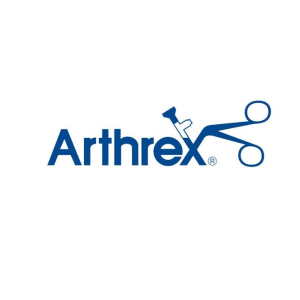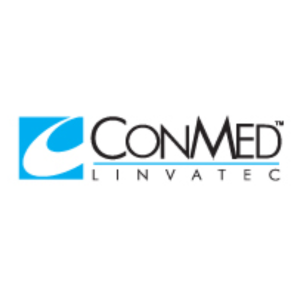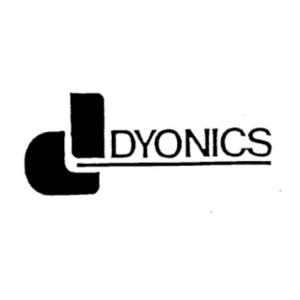This is an example of mega menu dropdown. You can edit it from admin panel -> HTML Blocks -> Menu shop.
All these pages are not included with a dummy content. You can configure your shop page as you need in Theme Settings -> Shop.
Medical Endoscope Camera
Introduction
The medical Endoscope Camera cannot be understood without studying the evolution and concept of endoscopy. The impact of the discovery of medical procedures such as endoscopy has widened the scope, spectrum and application of medicine. The use of innovation, technology and science have made medicine reach newer heights in studying, understanding and bringing solutions to human anatomy.
The invention and discovery of endoscopy to study inside human anatomy have revolutionized the scope of imaging and accuracy of medicine. Medical endoscopy camera has alleviated the accuracy of diagnosis for symptoms and diseases inside the body. Medical endoscopy has spread wide to engulf different forms of endoscopy for different parts of the body. For example, Bronchoscope, Gastroscope, Colonoscope, Hysteroscope, Duodenoscope, Cystoscope and Ureteroscope are endoscopy for different parts of the body.
Over the centuries, medical endoscopy has developed by leaps and bounds, bringing us closer to better diagnosis. The innovation cannot be without the medical endoscope camera. This article shall discuss the history, benefits, and information of medical endoscopy cameras that have revolutionized the way we see medicine today. We shall also briefly discuss medical endoscope camera repair services that we provide and are available.
Before diving into the historical aspect of medical endoscope cameras, let us first tackle what endoscopy and medical endoscope cameras are.
What is endoscopy?
As mentioned above, it is impossible to explain medical endoscope cameras without talking about endoscopes and endoscopy. Endoscopy is the process through which medical practitioners can look inside the body through the aid of the endoscope instrument. The procedure is not to be confused with surgery.
The endoscope is inserted into the body as per the areas that need internal imaging during the endoscopy process.
The instrument endoscope is a long tubular wire, flexible in character to maneuver through the contour of the internal organs, attached with camera lenses on one side and a video camera on the outer side.
The camera lenses on the endoscope capture internal organs imaging that helps diagnose medical issues that are not visible through other scans and imaging scans.
What is a medical endoscope camera?
The lens or camera used in the endoscope is called a medical endoscope camera. The endoscope camera is the central apparatus used to give the organs’ live status, which helps diagnose complications and other health issues.
The medical camera is inserted inside the internal hollow organs, and the imaging is displayed on the video screen. The discovery of such camera scans and imagining has evolved so much that medical cameras are used to perform surgeries inside such organs.
The endoscopy procedure has evolved so much that it has branched out to different forms of endoscopic procedures. Examples of such branches are Bronchoscopy, Gastroscope, a Colonoscope, Hysteroscope, etc. Medical endoscopic cameras are used in all these procedures.
History of medical endoscopy, endoscope and medical endoscope cameras
Endoscopy as a medical procedure is not a modern discovery. It has its discovery related to the 1800s. The first-ever endoscope instrument designed is traced to Phillip Bozzini for his Lichtleiter in 1805. The instrument used a silver mirror to reflect the image by using bee wax as a source of light. It is to be noted that the initial forms of endoscope did not have a camera lens.
Antoine Jean Desormeaux, in 1853 designed an instrument for examining the urinary tract, which he called an endoscope. The term endoscope has been used since then for the instrument. Camera lenses on endoscopes came years after phases of improvement in craft, design and technology. Many general practitioners along the way through their discoveries have contributed to what endoscope is today.
Phased development of the endoscope by various practitioners led to the various types of endoscopy and its different instruments. The evolution of the endoscope started with rigid instruments like that of Philip Bozzini. The second era signifies the development of the alimentary endoscopy. The likes of Adolf Kussmaul with his gastroscope, which widened the spectrum of medical endoscopy. From then on came the era of semi-rigid endoscopes. Rudolf Schindler, in the 1920s, improved the rigid endoscope to a semi-rigid endoscope.
The third era signifies the application of flexible endoscopes and fibreoptics in the procedure. This era started around the 1960s when flexible or curved glass rods were used for gastroenterology.
The fourth era signifies the use of electronic video assistance for endoscopy, pushing innovation to the level we see today. Welch Alleyn, in 1983, for the first time, used an electronic sensor for transmission of the internal image. The electronic sensor was connected to a monitor to transmit the image. Simultaneously, Olympus Company produced several improved versions of the electronic medical endoscope, which were extensively used for endoscopy.
Similarly, Japanese companies also started producing competitive electronic endoscopes. In fact, in 1985, the world’s first flexible Hysteroscope was introduced by Fujinon. The modern endoscope has come a long way since its initial use through a rigid instrument. The standard modern instruments are used in almost all medical spaces. With innovations, even wireless endoscopes have become the newest discovery in medicine.
The components of an endoscope:
- The standard modern instrument of endoscope consists of five parts which are listed as follows.
- A highly flexible, long and thin tube
- The tip of one side of the tube has a lens or a camera that captures the image.
- An eyepiece
- It also consists of a light system incorporated in the tube
- Then there is the control system
- Water tubes for cleaning the lends when it gets unclear
- The control cables
Types of endoscope
Endoscopes over the years have evolved into different types. The primary type is the rigid endoscope and the flexible endoscope. The rigid endoscope is the earliest form of endoscope invented and is still used in many other standard procedures.
On the other hand, the flexible endoscope is one that was invented in the more recent century. Flexible endoscopes are thin, long and flexible in nature that eases the movement of the medical endoscope camera inside the digestive tracts. Imagining is done for tricky places through the use of this type of scope.
Type of camera used in a medical endoscope camera
Depending on the type of endoscopy performed, the type of camera and flexible tube also varies. Generally, high-definition camera lenses are required for medical endoscope cameras. Since the camera needs to capture the details of the interiors, the camera lens quality needs to be of high definition.
Lenses with 0-degree to 70-degree coverage are used in the endoscope camera. The 0-degree lens is used for traditional endoscope instruments as they provide comprehensive uninterrupted imaging of the internal body.
How does a medical endoscope camera work?
The medical endoscope, as mentioned above, is a device or instrument that has the ability to capture the image of our internal organs. All endoscopic procedures are performed by inserting a flexible or rigid endoscope through a natural organ opening. There might be some variation given the type of endoscopy and the anesthesia used for the procedure.
After inserting the endoscopic instrument, Doctors or medical practitioners will get the imaging for diagnosis through the camera attached to the tube. To extract tissue samples for further testing, endoscope cameras are used to aid such procedures. Endoscopy is a non-invasive procedure that can be used for accurate diagnosis.
The camera inside the internal body converts the image it captures into an electric signal transmitted into a screen or a monitor. The image displayed on the monitor is not only observed by the doctor but also by other doctors and students. As such, it has an impact as a teaching aid for doctors and students.
Uses of the medical endoscope camera
There are several uses of endoscope cameras besides examining the digestive or gastro tracts. Here are some of the uses of the medical endoscope camera-
Endoscope biopsy- medical endoscope cameras are used for medical diagnosis that requires tissue samples. A non-invasive procedure like endoscope biopsy is used to extract the infected tissue in cases like cancer or tumors. The camera is beneficial for extracting accurate tissues in the internal organs.
The endoscopy is done through natural openings in the body or through the artificial opening.
Arthroscopy- another application of the medical endoscope camera is arthroscopy. It is a medical procedure in which the doctor or medical practitioners use such instruments to look inside joints. There are often symptoms like joint pain and joint injury that require close-up imaging for proper diagnosis.
A small incision is made in the area or joint that requires detailed imagining in this procedure.
Laparoscopy- Laparoscopy is a modern surgical procedure wherein the procedure is performed through keyhole insertion. In laparoscopy procedures, endoscopy is used to get detailed imaging for surgery through the keyhole. Medical endoscope cameras are crucial for such procedures.
Bronchoscopy- bronchoscopy is a process in which medical practitioners examine the airways. Either a flexible or a rigid bronchoscopy is used in this procedure, depending on the area and the type of examination. The medical endoscope camera is used for such procedures too.
Rhinoscopy- Medical endoscope cameras are used to examine the nose wall, even for procedures such as rhinoscopy. The same camera is used to get the imaging for infections or other legions.
The future- wireless capsule endoscopy
The future of medical endoscopes is wireless capsule endoscopy. It is one of the newest technology in the field of endoscopy. Wireless cameras are used in an ingested capsule, and high-definition camera lenses are used in these capsules. The capsule takes the image of the internal body as it passes through the body’s digestive path.
The capsule passes off the body when the patient releases stool or has a natural bowel movement. An electrode in the form of a sensor array is worn by the patient in the abdomen. It records the data of the capsule imaging. It takes a regular bowel movement to pass the vitamin size capsule pill. Once released from the digestive system, the capsules cannot be reused. The sensor array stores thousands of images which are then transferred to a monitor or computer to examine.
Medical endoscope camera repair services
Experts and professional
For medical endoscope camera repairs, we have competent and professional services available. Any medical equipment repairs require a high level of expertise and professionalism which we aspire to provide our customers and users. When it comes to repairs of medical instruments like endoscope cameras, trust expertise and competent companies.
When it comes to medical endoscope repairs, accuracy is critical. As any glitch and error during the repair services can cause a considerable discrepancy in the result and can cause medical mistakes during diagnosis. Trust only professionals like our services for repair services.
Quality products
We use only the top-quality parts during replacement and servicing to maintain quality and standard. We can guarantee that our replacement products meet all the medical standards and specifications required to maintain quality.
Since instruments like medical endoscope cameras are crucial to endoscopy, we use the market’s best for camera lens replacement and repairs.
Thorough inspection
Our repair services provide a thorough inspection of the medical instrument. Such services extend to medical endoscope cameras as well. You can be assured that our services meet medical practitioners’ standards and requirements. It is highly advised that medical endoscope cameras undergo timely repairs and services to avoid glitches and malfunctioning. Doing so will give longevity to medical types of equipment.
Certified service providers
Our staff and service providers are all certified and efficient members who strive to bring the best of medical instruments. Various high-tech testers are placed to detect issues with endoscope camera lenses. Our services aim to provide the best services for you, your health and your equipment.
Our services are also priced affordably for original quality products replacements and repairs. If you are looking for more detailed and other services, visit our websites. Our customer services will get back to you immediately. Further, you can also contact us directly from the phone number given on the website.









